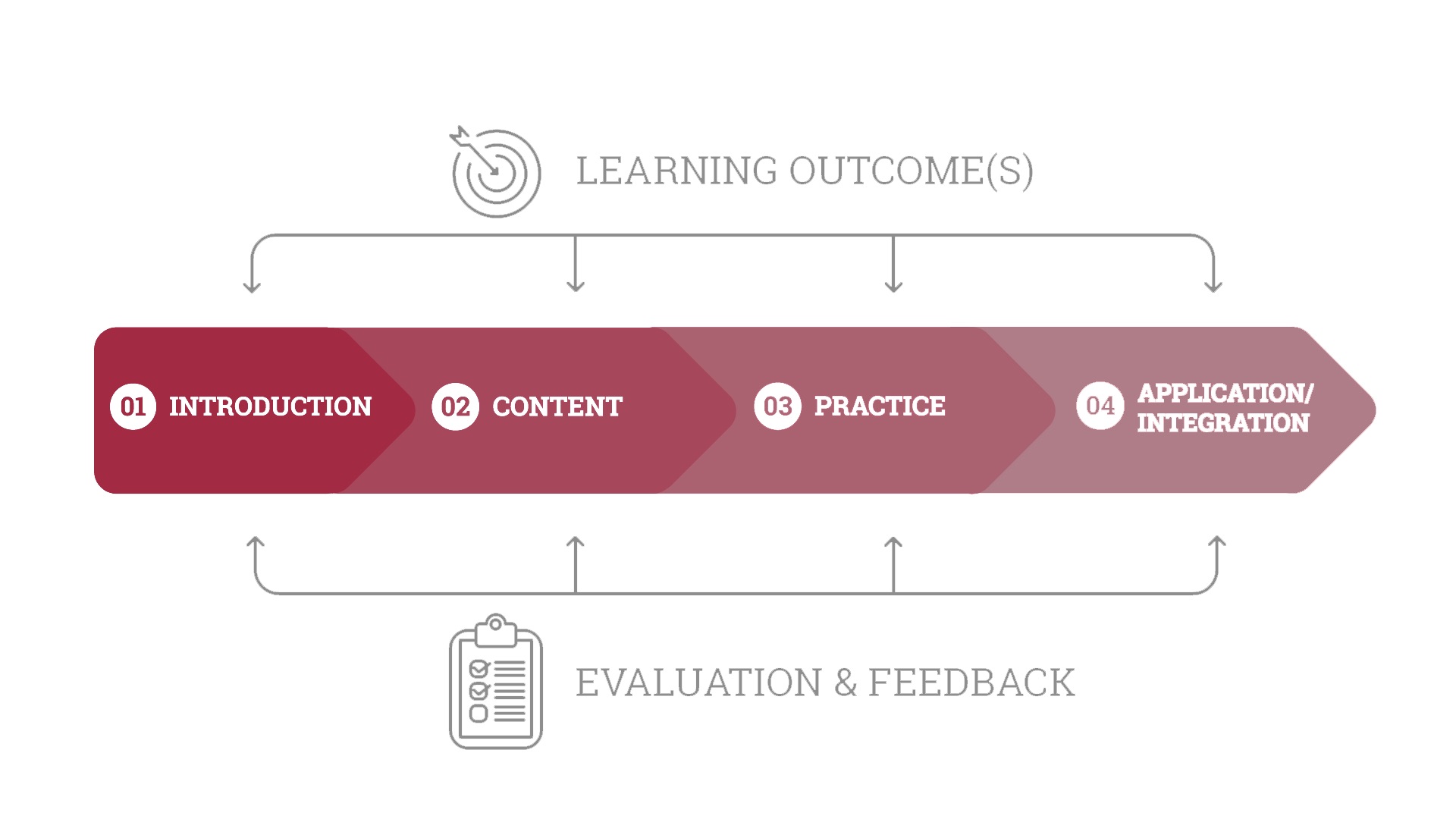Essential components of instruction
In brief
- For each unit or module, there are four essential phases of instruction that focus on the intended learning outcome: Introduction, Presentation of Content, Practice and Application.
- Feedback is a key component of instruction and should be included in planning at every phase of instruction for improved student learning.
Several instructional design models and frameworks that exist outline the entire process of designing a learning experience from analyzing the audience to implementing and revising instruction. Few of them, however, give specific guidelines for planning and organizing instructional activities. Of those that do, the most commonly used frameworks include: Gagné’s Nine Events of Instruction, WIPPEA, Merril’s First Principles and the 5E Instructional Model.
Although each of these frameworks is different, they all have three things in common:
- They are all centered around the learning outcomes.
- They all emphasize learner assessment & feedback throughout the process.
- They all include the following phases of instruction: an Introduction (in one form or another), (presentation of) Content, (guided) Practice, and Application.
Regardless of the instructional framework you prefer, we can say that there are certain components that are essential in the design of instruction.
Instructional planning framework
The following framework provides a guide on structuring the planning of learning activities for an instructional unit. All phases of instruction must follow this sequence.
All instructional planning centers around a learning outcome. Once your outcome is defined, it will inform all other phases of instruction from the content you choose, the practice and application activities you design, and the assessment(s) you use to measure the learning outcome.
Introduction
This phase serves as a primer to the topic – to connect it to prior knowledge, to establish context, to generate interest.
Presentation of content
This phase of instruction is where students engage with the content.
Practice
In this phase of instruction, students undertake activities that target their understanding of the specific content and performance of skills.
Application
In this phase of instruction, students integrate the new content and skills with previous knowledge in order to achieve the learning outcome.
Evaluation & feedback
Throughout all phases of instruction, it’s important to plan ways to assess students informally to gather information on their progress and provide them with information about their learning at every step.
Watch the video below to learn more about each of the phases of instruction.


